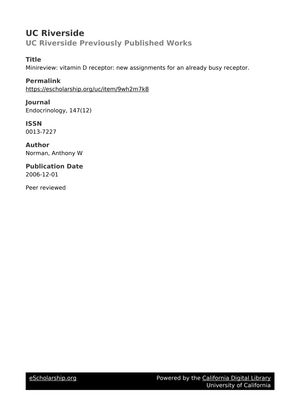Minireview: Vitamin D Receptor: New Assignments for an Already Busy Receptor
December 2006

TLDR The vitamin D receptor has many roles in the body beyond managing calcium, affecting the immune system, hair growth, muscles, fat, bone marrow, and cancer cells.
In the document from 2006, the vitamin D receptor (VDR) was discussed for its multifaceted roles beyond its initial association with calcium homeostasis. Discovered in 1969, the VDR was found in over 30 tissues and organs, indicating a broad influence of the vitamin D endocrine system. The VDR was involved in various functions in the immune system, hair follicle, muscle, adipose tissue, bone marrow, and cancer cells. In the mid-1980s, rapid responses (RR) to the steroid hormone 1alpha,25(OH)2-vitamin D3 [1alpha,25(OH)2D3] were observed, which were too quick to be explained by gene transcription alone. This led to the discovery that the VDR, typically located in the cell nucleus, could also be associated with caveolae in the plasma membrane. The document proposed a conformational ensemble model of the VDR, suggesting that 1alpha,25(OH)2D3 can produce different ligand shapes that selectively mediate genomic and RR through the VDR in various cellular locations.
